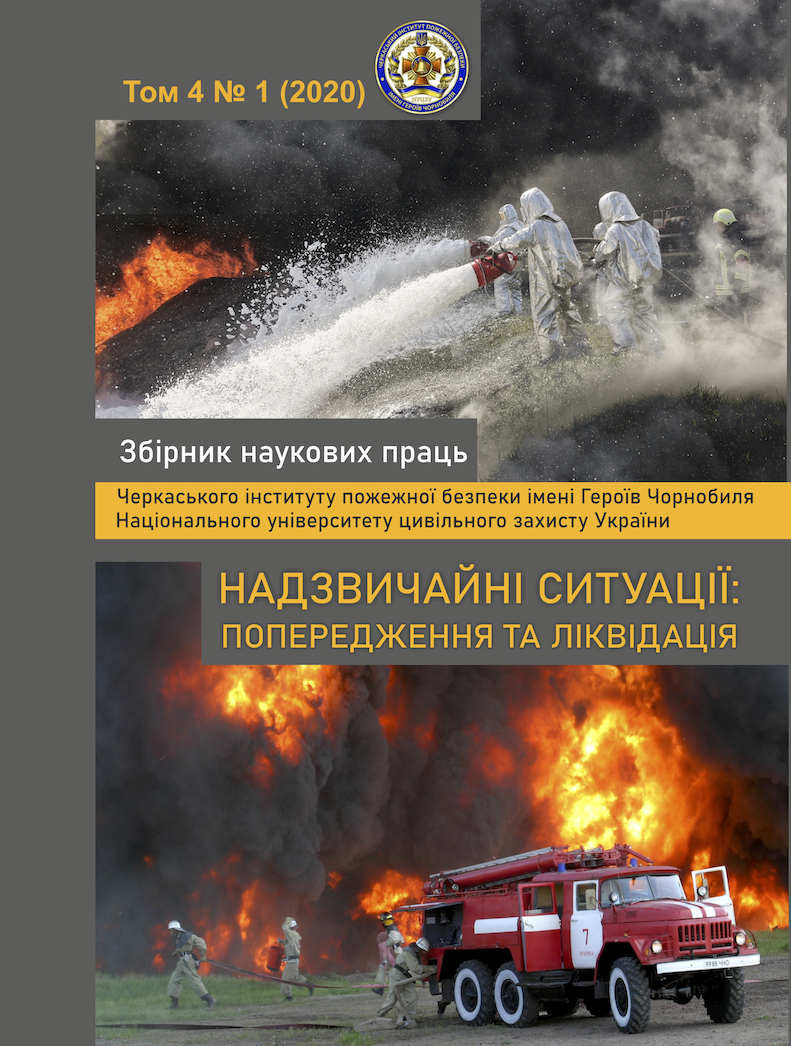ВИЯВЛЕННЯ ЗАЛЕЖНОСТІ ВІТРОВОГО ВПЛИВУ НА КРИТИЧНУ ПОВЕРХНЕВУ ГУСТИНУ ТЕПЛОВОГО ПОТОКУ
Анотація
Навколишнє середовище та його параметри безумовно впливають на процеси теплопередачі під час пожежі та на діяльність людини. Вивчення цих факторів та здатність зменшити їх негативний вплив є важливим питанням сьогодення. У зазначеній статті проведено аналіз останніх публікацій з даної тематики. Визначено, що вплив вітру на процеси теплообміну має суперечливі результати та потребує подальшого вивчення. Обґрунтовано залежність впливу вітру від значення поверхневої густини теплового потоку, при якому відбувається стійке полум’яне горіння за допомогою повнофакторного експерименту. Автори визначили найбільший та найменший показники значущих факторів, що впливають на величину критичної поверхневої густини теплового потоку, а саме швидкість вітру (v, м / с) та задану поверхневу густину теплового потоку (q, кВт/м2). В ході проведеного дослідження авторами була побудована математична модель, яка описує залежність впливу вітру на критичну поверхневу густину теплового потоку. Ця залежність представлена як лінійна. Визначено відповідні константи для числового рівняння регресії, яке має вигляд лінійного. Для визначення констант рівняння числової регресії було проведено 4 числових експерименти відповідно до матриці планування повного факторного експерименту. Завдяки побудованій регресійній залежності була створена відповідна поверхня залежності між швидкістю вітру, критичною поверхневою густиною теплового потоку та часом, протягом якого відбувається займання матеріалу. На основі результатів була розроблена відповідна таблиця для значень критичної поверхневої густини теплового потоку для речовин та матеріалів залежно від впливу вітру. Ця таблиця може бути використана в майбутньому для розробки удосконаленого спрощеного методу прогнозування теплового впливу пожежі на сусідні будівлі з урахуванням впливу вітру.


